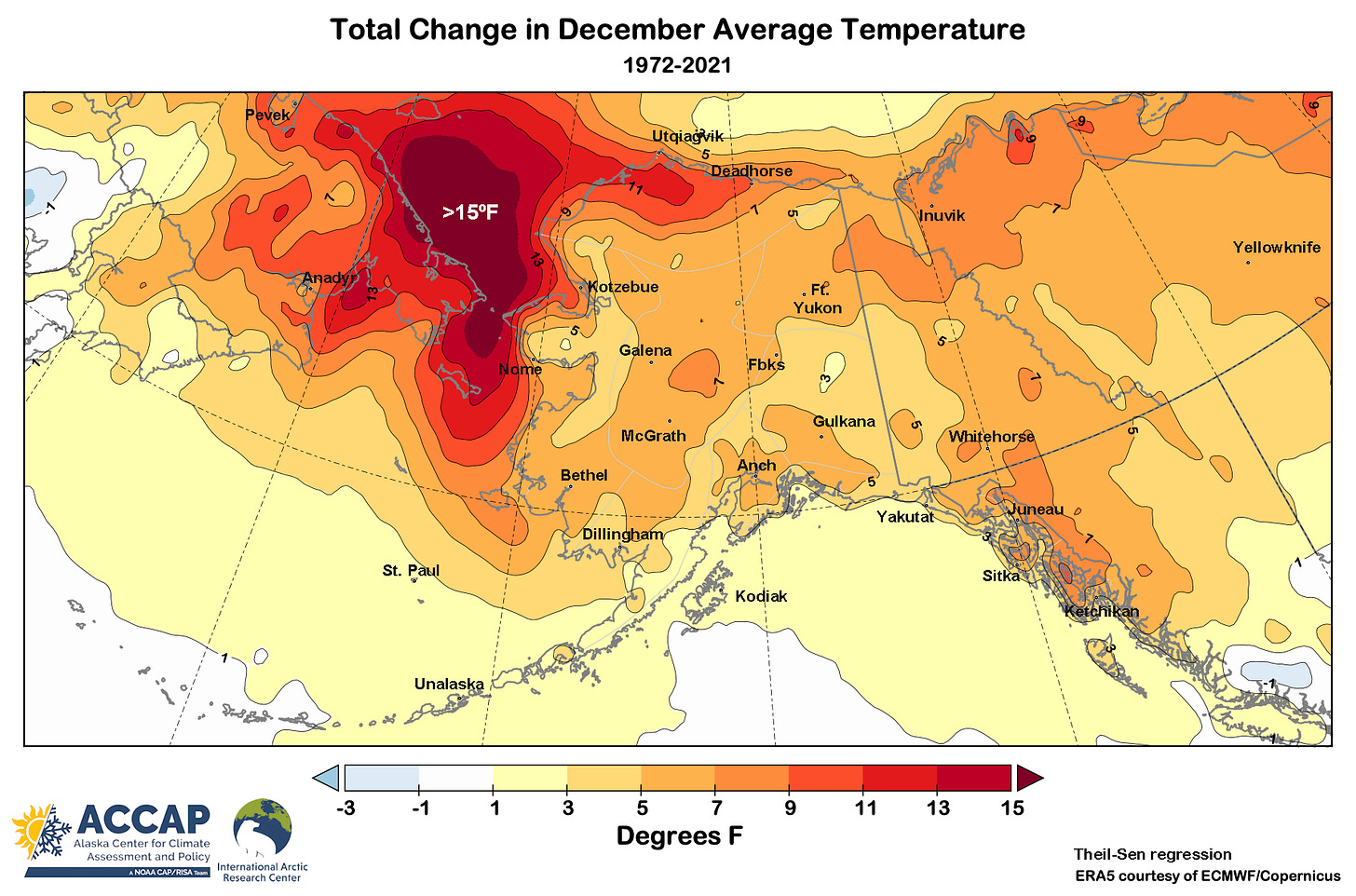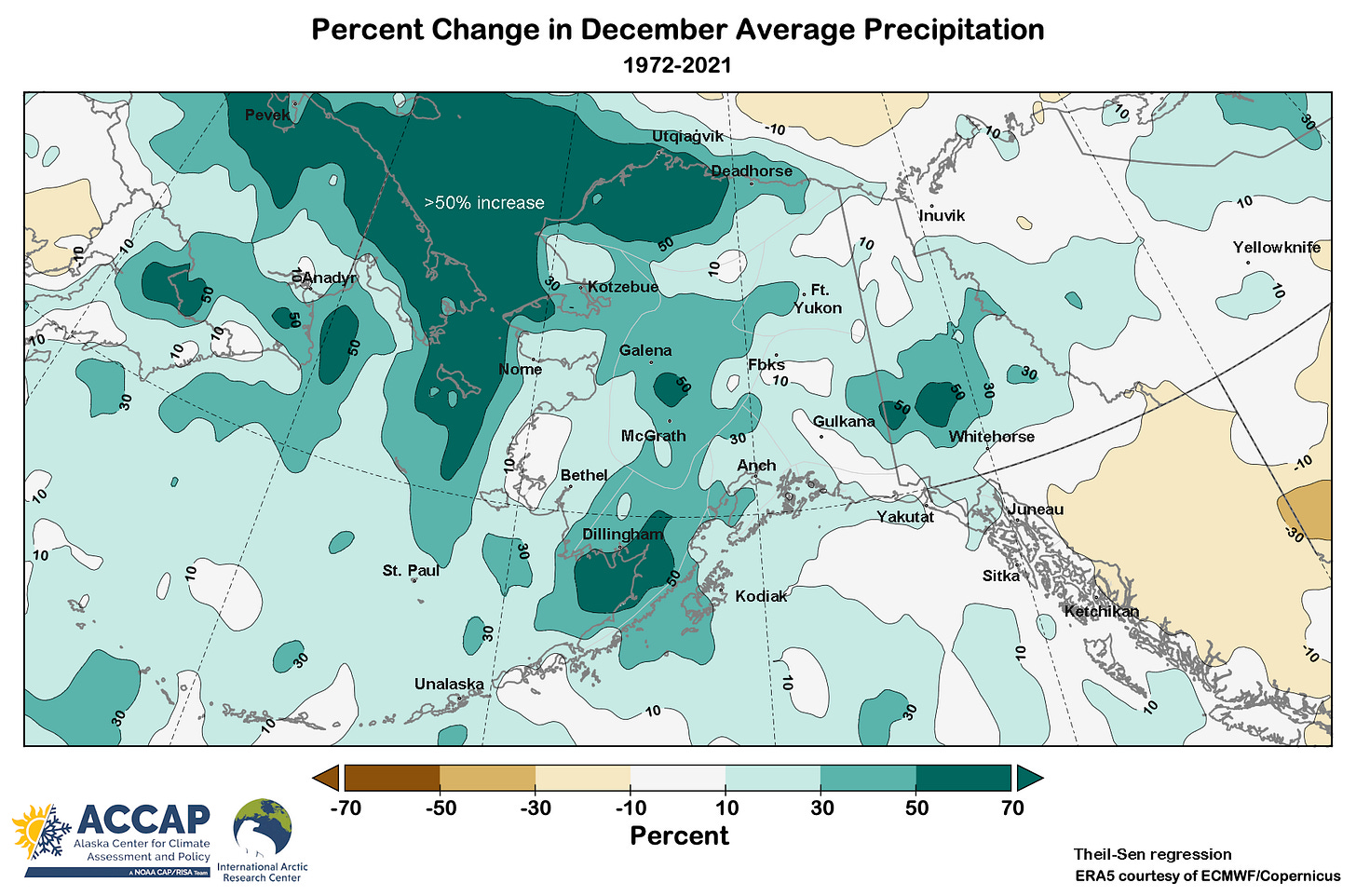December average temperatures have increased dramatically during the past fifty years all across Alaska and vicinity (Fig 1a for changes given in °F, Fig 1b for changes given in °C). December shows the largest changes in average temperatures of the core winter months. A lot of the increase is due to sea ice loss (both extent and volume), but the location of highest temperature increase is shifted southward relative to November, when the largest changes are mostly north of 68N. In December, the largest increases are over the southwest Chukchi Sea with a nose of warmth down through the Bering Strait toward St. Lawrence Island. With December being the month with little to no significant solar heating, strong surface temperature inversions are common in many inland areas. We’ll discuss temperature inversions in a future post, but for now just know that in a weather/climate context, “temperature inversion” means that temperatures near the ground are lower than just a little bit aloft. That’s “inverse” of the “typical” situation where temperature decreases with height above the ground. At high latitudes (everywhere in our area of interest), in areas with light winds, temperature inversions can be very strong and last for days or weeks at a time, and this is part of the reason the trends are (mostly) less over inland mainland Alaska and the Yukon compared to the ocean areas where sea ice is directly a factor.
Precipitation (rain plus melted snow) changes over the past half century shows a trend toward wetter over most of mainland Alaska and into the Yukon Territory, though little change across Southeast Alaska (Fig 2). These trends have the stamp of reduced and thinner sea ice, especially in the Chukchi and northern Bering Sea regions, with higher ocean surface temperatures likely playing a secondary role. There is some hint here too of persistent variations in storm track, as seen in the modest but widespread decrease in precipitation over far Southeast Alaska and much of British Columbia but the increase over Bristol Bay and Kodiak Island areas.
The December snowfall (liquid equivalent) trend (Fig 3) is quite similar to the total precipitation trend in areas where (typically) nearly all December precipitation falls as snow. However, south of 60N there are areas with significant differences. The largest area is over Southeast Alaska south of Juneau, where snowfall has decreased markedly but total precipitation has not changed much, i.e. much more of the monthly precipitation is falling as rain instead of snow.








Substack really suits these medium length articles better than Twitter. Thanks!